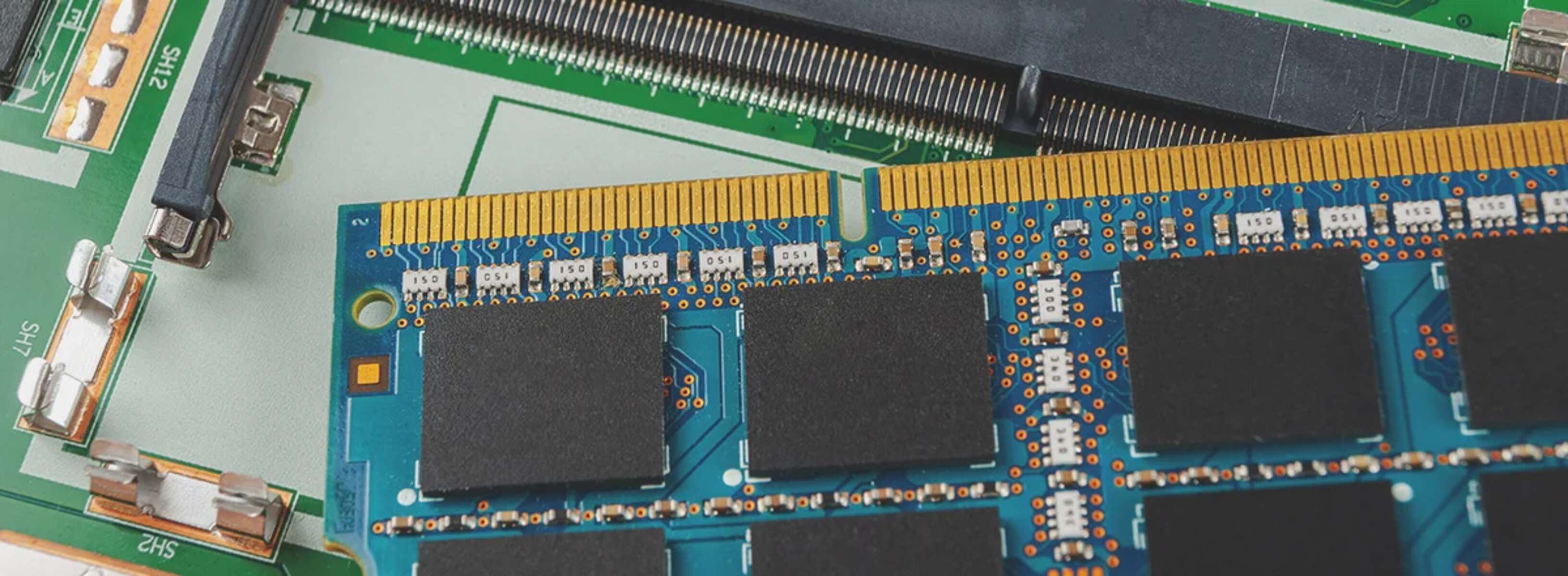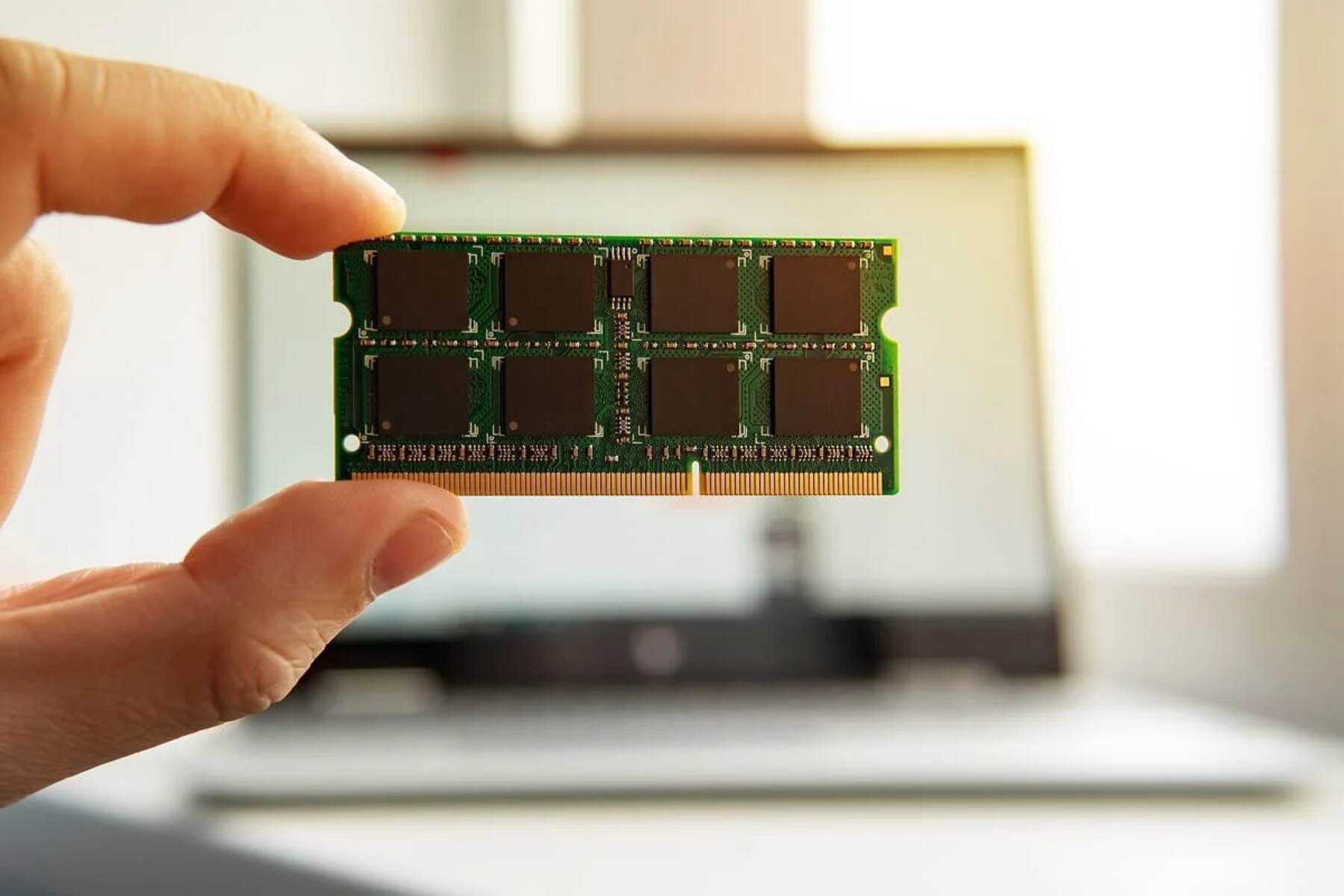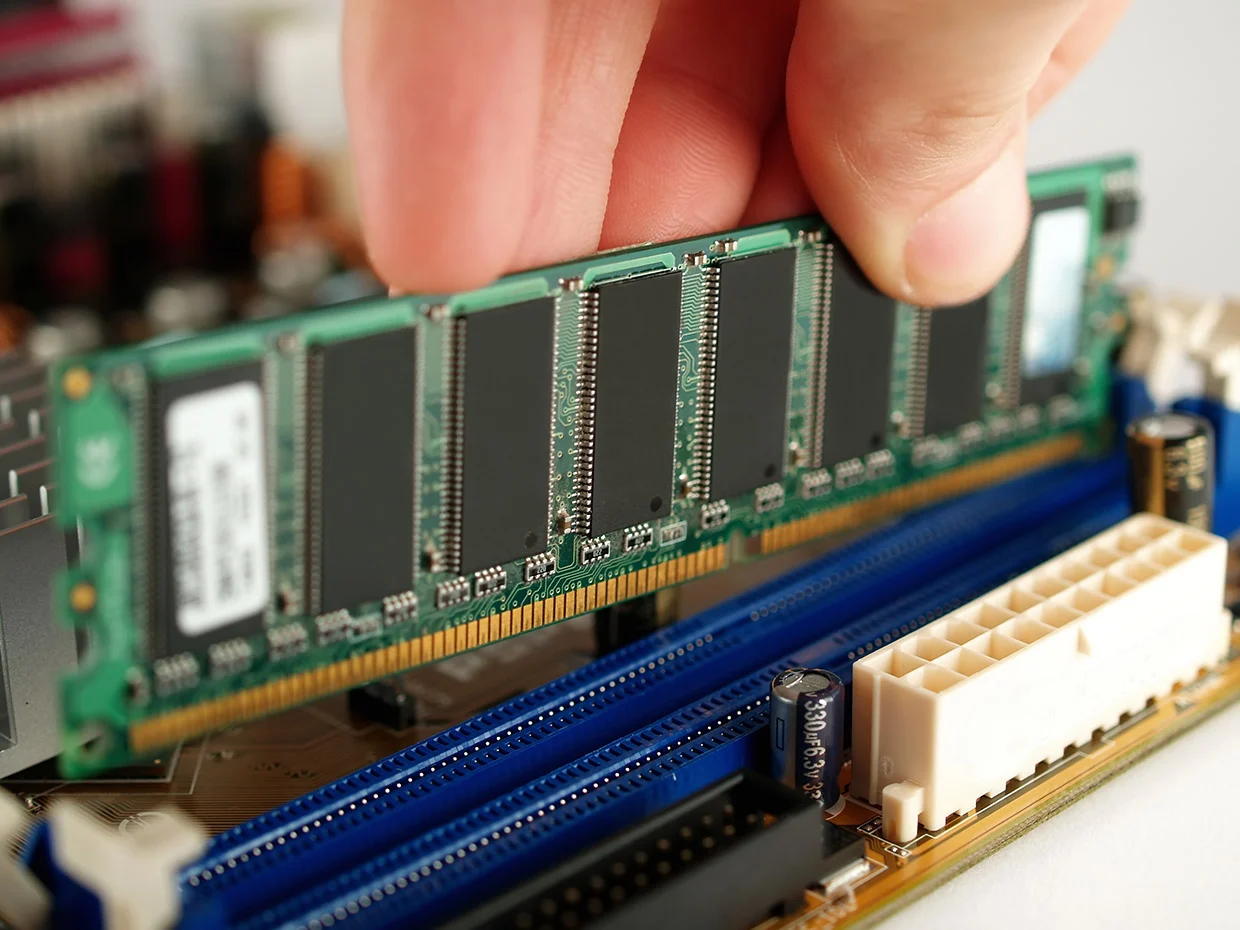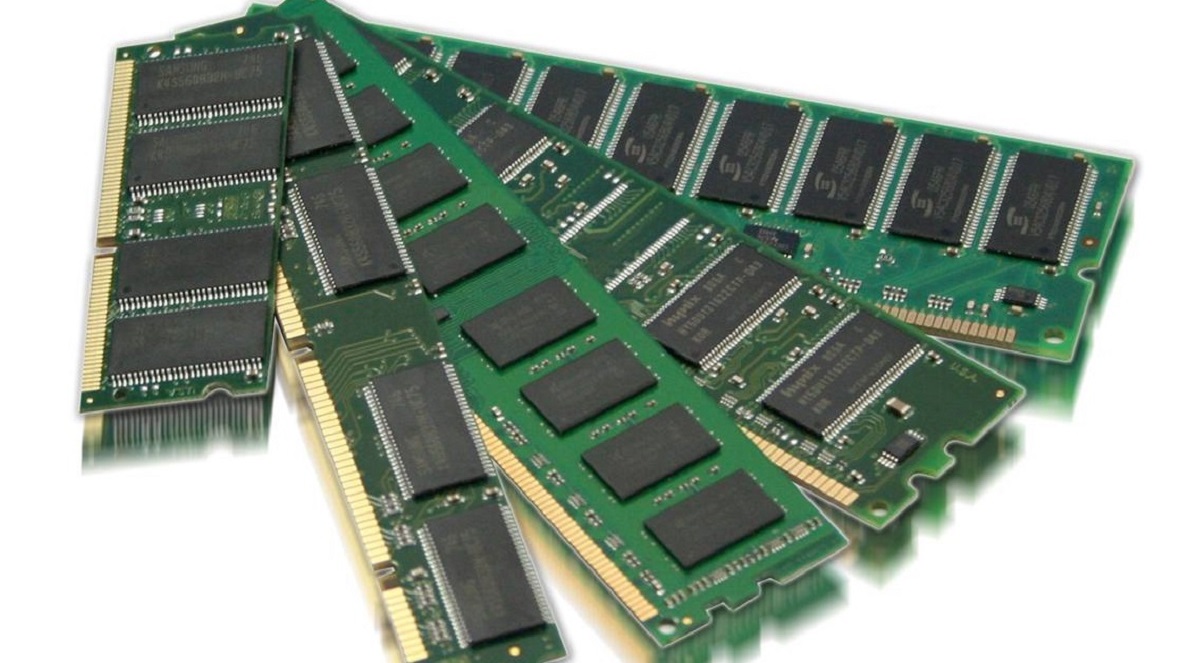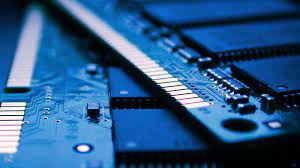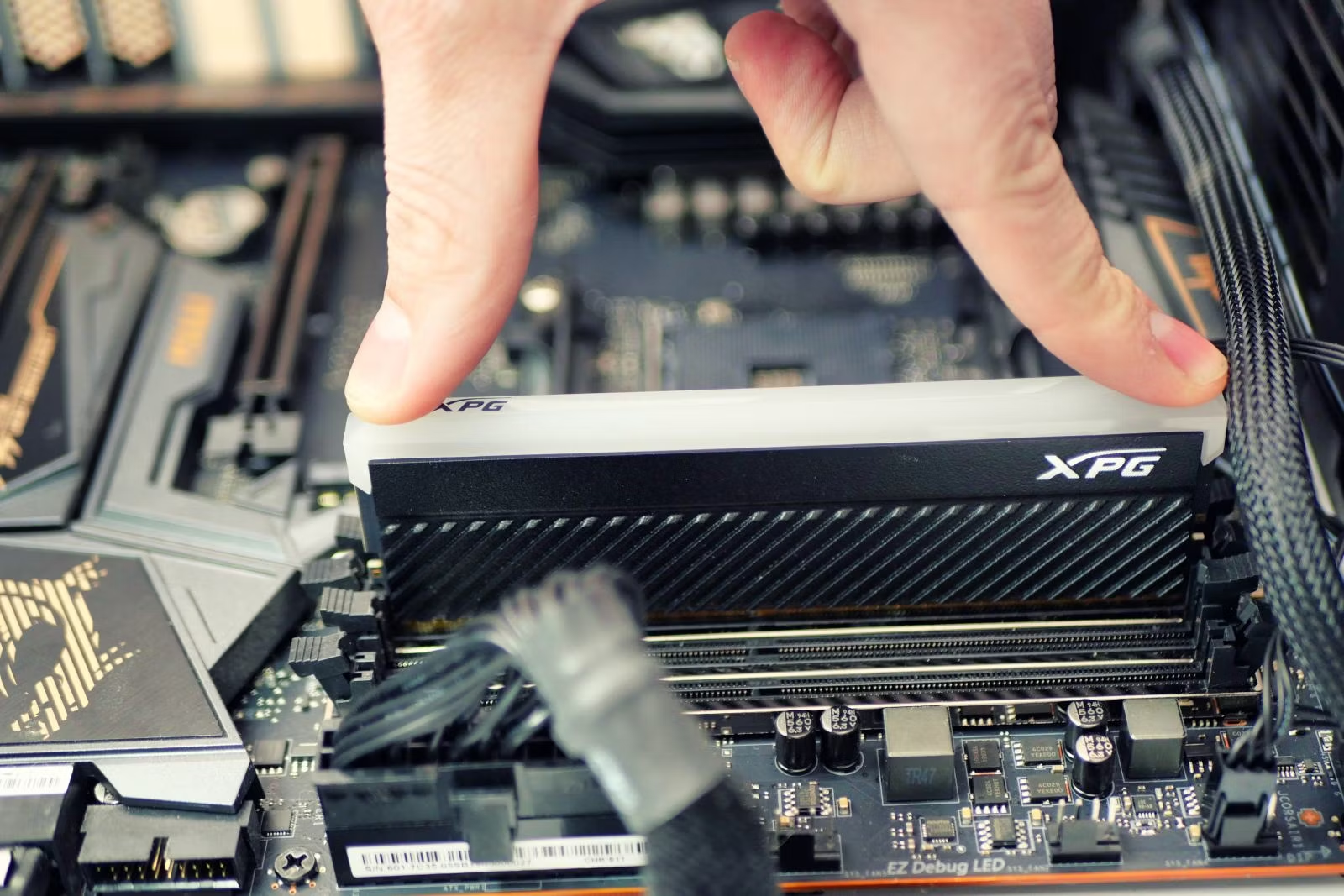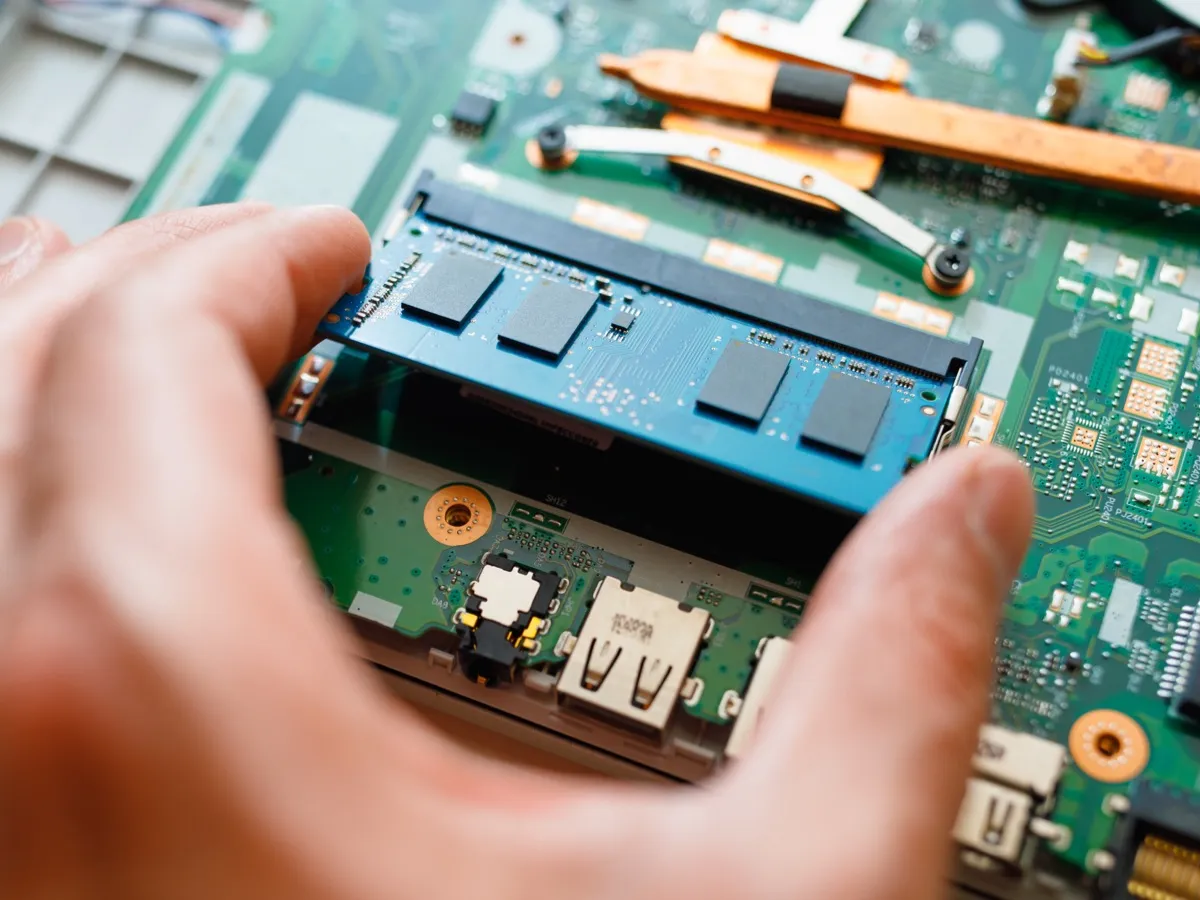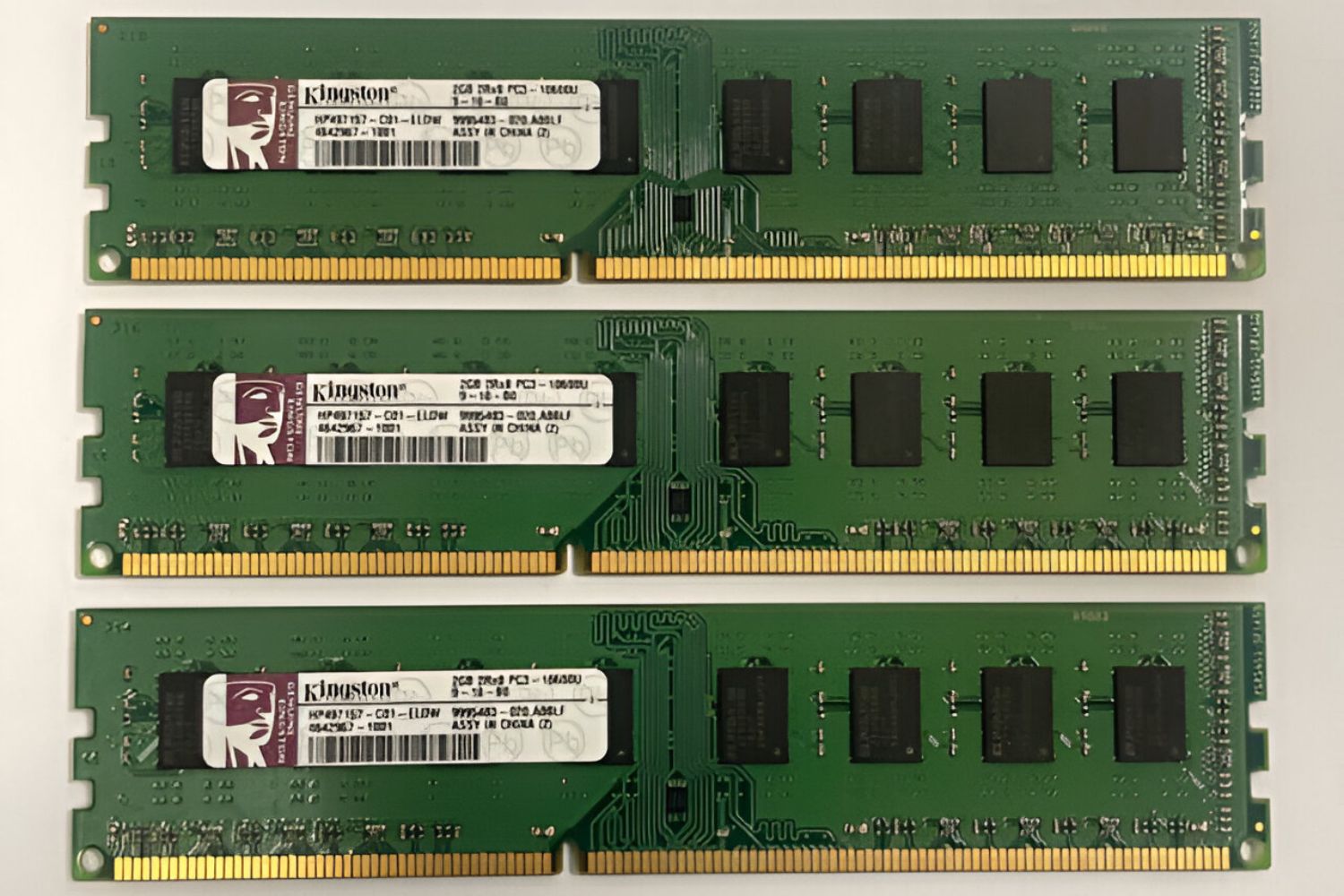Introduction
Welcome to the fascinating world of computer memory! In today’s fast-paced digital era, the need for powerful computing systems is on the rise. As technology continues to evolve, so does the demand for larger and faster memory solutions. One crucial component that determines a computer’s performance is Random Access Memory, commonly known as RAM.
RAM is a valuable resource that plays a vital role in the overall speed and efficiency of a computer. It acts as a temporary storage space for data that the computer needs to access quickly. Whether you’re a gaming enthusiast, a professional working with resource-intensive software, or a data center managing vast amounts of information, having sufficient RAM is essential for optimal performance.
In this article, we delve into the intriguing world of computer memory and explore the RAM capabilities of the most powerful computers currently available. We’ll discuss the importance of RAM in various computing scenarios and shed light on the specific requirements of different user types.
Whether you’re a tech-savvy individual looking to upgrade your gaming rig, a professional seeking a robust workstation, or a business owner interested in data center management, understanding the role of RAM and its implications on computing performance is paramount. So, let’s dive into the world of RAM and discover just how much power the most cutting-edge computers can harness!
What is RAM
Before delving into the realm of powerful computers and their RAM capabilities, let’s first understand what RAM is and how it functions. RAM, or Random Access Memory, is a type of computer memory that provides temporary storage for data that the computer needs to access quickly.
RAM is different from other types of storage, such as hard drives or solid-state drives (SSDs), which provide long-term storage for files and programs. Unlike these storage devices, RAM is volatile, meaning that its contents are lost when the computer is powered off or restarted.
RAM acts as a bridge between the computer’s processor and its storage devices. When you open an application or perform any operation on your computer, data is temporarily stored in RAM for quick access. This allows the processor to retrieve the required information rapidly, improving overall system performance.
The storage capacity of RAM is measured in megabytes (MB), gigabytes (GB), or terabytes (TB). The more RAM a computer has, the more data it can store and access quickly, leading to smoother multitasking and faster application responsiveness.
RAM operates at a much higher speed than storage devices like hard drives or SSDs. Accessing data from RAM is significantly faster than retrieving it from storage, resulting in reduced loading times for applications, faster data processing, and an overall snappier computing experience.
It’s important to note that RAM is separate from a computer’s permanent storage. When you save a file or install a program, it is stored on the hard drive or SSD, not in RAM. However, when you open that file or launch the program, a portion of it is loaded into RAM for quick access.
Overall, RAM plays a critical role in enhancing a computer’s performance, allowing for smoother multitasking, faster application loading times, and improved system responsiveness. Now that we understand what RAM is and how it works, let’s explore why it’s so important in the world of computing.
Why is RAM Important
RAM, or Random Access Memory, is a crucial component in determining a computer’s performance. It plays a significant role in enhancing system speed, multitasking capabilities, and overall user experience. Here are some key reasons why RAM is important:
1. Speed and Responsiveness: RAM allows the computer to access and retrieve data quickly. It stores frequently used data and instructions, making them readily available to the processor. This results in faster application loading times, smoother multitasking, and improved system responsiveness.
2. Multitasking: In today’s computing environment, multitasking has become a common requirement. Whether you’re browsing the web, streaming videos, working on documents, or running resource-intensive software, having sufficient RAM allows your computer to handle multiple tasks simultaneously without slowing down.
3. Application Performance: RAM directly impacts the performance of the applications you use. When an application requires more memory than is available, the computer compensates by using virtual memory, which involves using a portion of the hard drive as an extension of RAM. However, accessing data from virtual memory is considerably slower than accessing it directly from RAM, leading to decreased application performance.
4. Gaming Performance: Gamers often require systems with higher RAM capacity to achieve smooth and immersive gameplay. Games with advanced graphics, open-world environments, and complex physics simulations are resource-intensive and require ample RAM to ensure optimal performance. Insufficient RAM can result in lag, frame rate drops, and overall reduced gaming experience.
5. Workstation and Productivity: Professionals working with resource-intensive software, such as designers, engineers, and video editors, greatly benefit from having ample RAM. These applications often require significant system resources to handle complex calculations, render graphics, or process large files. Insufficient RAM can slow down these processes, leading to longer rendering times and decreased productivity.
6. Virtualization and Data Centers: In the world of data centers and virtualization, RAM is critical for efficiently managing and running multiple virtual machines. Virtual machines require dedicated portions of RAM to operate effectively, and insufficient memory can hamper their performance, leading to slower response times and reduced efficiency.
Understanding the importance of RAM is essential when considering the requirements of different computing scenarios. Whether you’re a gamer, professional, or data center manager, ensuring you have sufficient RAM in your system is vital for achieving optimal performance and maximizing your overall computing experience.
The Most Powerful Computer
Advancements in technology have led to the creation of incredibly powerful computers that push the boundaries of what’s possible in computing. These supercomputers combine cutting-edge hardware and software technologies to deliver unmatched processing power. One such remarkable computer is the reigning champion of computational performance—the Summit supercomputer.
The Summit supercomputer, developed by IBM in collaboration with the U.S. Department of Energy’s Oak Ridge National Laboratory, is currently recognized as the most powerful computer in the world. It boasts impressive specifications that set it apart from other computing systems.
Featuring an impressive 4,356 nodes, the Summit supercomputer houses a remarkable 2.41 million processor cores. This massive parallel computing power allows it to perform around 200 quadrillion calculations per second, or 200 petaflops, making it the fastest supercomputer in the world.
The Summit supercomputer is powered by a unique combination of processors. It utilizes a mix of IBM POWER9 CPUs and NVIDIA V100 Tensor Core GPUs, which work in harmony to deliver exceptional computing performance. This combination is particularly well-suited for tasks that require both high computational power and accelerated performance, such as scientific simulations, data analytics, and artificial intelligence workloads.
Summit possesses a staggering amount of memory—approximately 10 petabytes. This immense memory capacity allows it to efficiently handle massive datasets, enabling complex calculations and data analysis with ease.
In addition to its impressive computing and memory capabilities, the Summit supercomputer utilizes a high-speed, low-latency network interconnect known as InfiniBand. This advanced interconnect technology ensures the rapid exchange of data between different nodes, promoting efficient communication and collaboration among processors.
The Summit supercomputer’s immense power and capabilities have enabled it to tackle a variety of scientific and research challenges. From analyzing climate patterns and simulating nuclear reactions to accelerating drug discovery and genomics research, Summit is at the forefront of high-performance computing across a range of domains.
Keep in mind that the computing landscape is ever-evolving, and new supercomputers with even greater capabilities are constantly being developed. However, at this moment, the Summit supercomputer stands as an impressive testament to the extraordinary power that modern computing systems can harness.
How Much RAM Does It Have
When it comes to the amount of RAM a computer has, the Summit supercomputer is no slouch. With its impressive computing power and the intensive workloads it handles, Summit requires a substantial amount of memory to support its operations effectively.
The Summit supercomputer currently boasts an astonishing total of 2.8 petabytes of RAM. To put this into perspective, a petabyte is equivalent to 1,000 terabytes or 1 million gigabytes. This massive amount of RAM allows Summit to handle incredibly large datasets, perform complex simulations, and execute resource-intensive computations with ease.
Having such an immense amount of RAM provides several advantages for the Summit supercomputer. Firstly, it allows for extensive in-memory processing, meaning that large portions of the datasets being analyzed can be stored and manipulated directly in RAM without the need for frequent read/write operations from slower storage devices. This dramatically increases data processing speed and overall system performance.
Additionally, the large RAM capacity of Summit enables it to execute parallel computations on a massive scale. With the ability to store and process vast amounts of data simultaneously, Summit can tackle complex scientific simulations, big data analytics, and artificial intelligence workloads with exceptional efficiency.
The substantial amount of RAM also empowers Summit to handle multiple tasks and workloads simultaneously without experiencing performance bottlenecks. This capability is particularly crucial in scientific research and simulations, where large amounts of data need to be processed and analyzed concurrently to derive meaningful insights.
It’s worth noting that the amount of RAM a computer requires depends on the specific computing needs and workloads. While the Summit supercomputer sets a remarkable example with its 2.8 petabytes of RAM, most consumer and professional-grade computers don’t require such colossal amounts of memory. However, as technology continues to advance and computing demands increase, the need for larger RAM capacities becomes more prevalent in various industries and research domains.
As scientists and engineers seek to push the boundaries of computing, the Summit supercomputer serves as an inspiring example of how colossal amounts of RAM can enable groundbreaking advancements and deliver unprecedented computational power.
RAM for Gaming
Gaming has become increasingly demanding in terms of system requirements, with modern titles pushing the boundaries of graphics and processing power. RAM plays a crucial role in ensuring a smooth and immersive gaming experience. Here are some key considerations for RAM when it comes to gaming:
1. Capacity: The capacity of RAM is an essential factor when it comes to gaming. Most games today require a minimum of 8GB of RAM, but for optimal performance, it is recommended to have 16GB or more. This allows the system to handle the game’s data, textures, and processes efficiently, reducing load times and preventing stuttering or lag during gameplay.
2. Speed: The speed of the RAM, measured in megahertz (MHz), affects the rate at which data can be processed and transferred. Higher RAM speeds can improve gaming performance by reducing latency and providing faster access to game assets and instructions. However, it’s important to note that the benefits of faster RAM speeds diminish after a certain point, so make sure to check the recommended speeds for your specific gaming setup.
3. Dual Channel vs. Single Channel: Dual-channel memory configurations, in which two matching RAM modules are installed in corresponding memory slots on the motherboard, can provide a performance boost over single-channel configurations. Games that rely heavily on memory bandwidth can benefit from dual-channel setups, as they allow for faster data transfer between the RAM and the processor.
4. Compatibility: It’s crucial to ensure that the RAM you choose is compatible with your gaming system’s motherboard and CPU. Check the specifications and supported memory types for your specific hardware to avoid any compatibility issues. Additionally, consider the maximum supported RAM capacity of your motherboard to ensure future upgradability.
5. Multitasking and Streaming: If you plan to multitask while gaming or live stream your gameplay, having more RAM can be beneficial. Running background applications, such as voice chat programs, streaming software, or web browsers, alongside your game can put additional strain on your system’s memory. Having sufficient RAM ensures smooth performance across all tasks and minimizes the impact on your gaming experience.
6. Future-Proofing: The gaming industry is continuously evolving, with advancements in graphics and game mechanics. Investing in higher-capacity RAM not only improves current gaming performance but also helps future-proof your system. Games are likely to become more demanding in the coming years, and having ample RAM ensures your system can handle the requirements of future titles without the need for immediate upgrades.
RAM is a crucial component when it comes to gaming performance. It directly impacts loading times, frame rates, and overall system responsiveness. By considering the capacity, speed, configuration, and compatibility of your RAM, you can ensure a seamless and enjoyable gaming experience, allowing you to fully immerse yourself in your favorite virtual worlds.
RAM for Workstations
Workstations are powerful machines designed for professionals who work with resource-intensive software, such as designers, architects, engineers, and video editors. These applications often require substantial system resources, including RAM, to handle complex calculations, render high-resolution graphics, and process large datasets. Here’s what you need to consider when it comes to RAM for workstations:
1. Capacity: Workstations typically require higher RAM capacities compared to consumer-grade computers. The recommended RAM capacity for workstations ranges from 16GB to 64GB or more, depending on the specific software and tasks involved. Designers and video editors working with large files and multi-layered projects may benefit from having even higher capacities to ensure smooth operation and reduce processing times.
2. Speed and ECC: Workstations often rely on ECC (Error-Correcting Code) RAM, which helps detect and correct memory errors, ensuring stable and reliable operation. Additionally, faster RAM speeds can significantly improve performance in workstation applications that involve rendering, simulation, and data processing. Look for RAM modules with higher frequencies (measured in megahertz) and ECC capabilities to optimize the overall throughput and stability of your workstation.
3. Multitasking and Virtualization: Workstation users often multitask and run multiple resource-intensive applications simultaneously. Having sufficient RAM allows for smooth multitasking, with each application having ample memory to operate seamlessly. Furthermore, if you use virtualization software or work with virtual machines, additional RAM is necessary to allocate to each virtual environment, ensuring efficient and responsive performance.
4. Workstation-Grade RAM: Some vendors offer RAM specifically designed for workstations, optimized for stability and compatibility with professional-grade applications. While not necessary, using RAM from reputable sources can provide additional peace of mind, ensuring that the memory modules are of high quality and meet the demanding requirements of workstation users.
5. Future Upgradability: As workstation applications and projects become more demanding, it’s important to plan for future needs. Investing in a workstation with expandable RAM slots allows you to add more memory in the future as your requirements evolve. Consider the maximum supported RAM capacity of your workstation’s motherboard to ensure you have room for future memory upgrades.
6. Enhanced Performance Features: Some workstation applications can benefit from additional RAM features, such as error-checking, memory profiling, or software optimizations. Be sure to research the specific requirements of your software to determine if any specialized features or configurations are recommended for optimal performance.
RAM plays a critical role in ensuring smooth operation and exceptional performance for workstation users. By considering the capacity, speed, stability, and future upgradability of your RAM, you can optimize your workstation’s capabilities, enabling you to work more efficiently and handle complex tasks without slowdowns or performance bottlenecks.
RAM for Data Centers
Data centers are the backbone of modern technology, serving as the centralized hub for processing vast amounts of information and providing crucial services for businesses and organizations. RAM plays a pivotal role in data centers, enabling efficient data management and processing. Here are key considerations for RAM in data centers:
1. Capacity: Data centers deal with enormous amounts of data, necessitating large RAM capacities. The appropriate RAM capacity for a data center depends on the specific workload and requirements. High-capacity servers typically have RAM ranging from several hundred gigabytes to several terabytes per node, allowing for efficient data handling and analysis.
2. Speed and Throughput: RAM with high-speed access and large bandwidth is crucial for data centers to handle the massive amount of data processing required. Faster RAM speeds and wider memory channels facilitate rapid data retrieval for quick decision-making and analysis. High-throughput RAM ensures minimal latency and maximizes the overall performance of data center operations.
3. Memory Virtualization: Data centers often employ virtualization technologies to optimize resource utilization and enhance scalability. Virtualization technologies rely heavily on RAM to allocate memory resources to virtual machines (VMs). Sufficient RAM capacity is essential to support multiple VMs running simultaneously without compromising performance or experiencing resource contention.
4. Reliability and Error Correction: Data integrity is of utmost importance in data centers. ECC (Error-Correcting Code) RAM plays a vital role in detecting and correcting memory errors, reducing the risk of data corruption and system crashes. Investing in reliable, stable RAM modules with error correction capabilities is crucial to maintain data integrity and minimize system downtime.
5. Memory Caching: RAM caching is a common technique used in data centers to improve data access speeds. Frequently accessed data can be stored in RAM to reduce latency and decrease the load on storage devices. Utilizing RAM caching techniques can significantly enhance data center performance, especially for applications involving real-time data processing or high-speed data retrieval.
6. Scalability: As data center workloads grow, the need for scalable RAM configurations becomes paramount. Choosing servers with expandable RAM slots or modular designs allows for easy addition of additional memory modules as data center demands increase. Scalable RAM configurations ensure the flexibility to adapt to evolving data center requirements without requiring complete hardware replacements.
7. Power Efficiency: Data centers consume substantial amounts of energy, and optimizing power efficiency is a key concern. Consider low-voltage RAM modules that consume less power while maintaining performance. Energy-efficient RAM can contribute to overall power savings and lower operational costs for data centers.
RAM is a critical component of data center infrastructure, enabling efficient data processing, storage, and retrieval. By considering capacity, speed, reliability, scalability, and power efficiency, data centers can optimize their RAM configurations to meet the demands of modern computing and data-driven operations.
Conclusion
RAM, or Random Access Memory, is a fundamental component in modern computing systems that significantly impacts performance across various domains. Whether you’re a gamer, a professional using resource-intensive applications, or managing a data center, having sufficient and appropriate RAM is crucial for optimal system performance.
We explored the importance of RAM in different scenarios, starting with an understanding of what RAM is and how it functions. RAM acts as temporary storage for data that the computer needs to access quickly, allowing for faster processing and multitasking capabilities. The capacity, speed, and configuration of RAM all play a crucial role in determining system performance.
In gaming, having adequate RAM capacity and speed is vital for smooth gameplay, faster loading times, and reduced lag. As games become more graphically advanced and demanding, investing in higher-capacity RAM ensures a seamless and immersive gaming experience.
For professionals working with resource-intensive applications, such as designers, engineers, and video editors, having ample RAM enables smooth operation of complex calculations, rendering processes, and data manipulation. Higher RAM capacities and faster speeds optimize productivity and reduce processing times.
In data centers, where vast amounts of data are processed and managed, large RAM capacities and high-speed memory are essential for efficient handling of workloads. Reliable RAM with error correction capabilities helps maintain data integrity, while scalable configurations and power-efficient modules allow for optimized operations.
As technology continues to evolve, the need for larger RAM capacities and faster speeds will likely increase. Stay up to date with the latest advancements and consider the specific requirements of your computing needs when selecting and upgrading your RAM.
In summary, RAM holds a crucial role in enhancing system performance and ensuring seamless operation across various computing scenarios. By understanding the importance of RAM and tailoring its capacity and specifications to your specific requirements, you can unlock the full potential of your computer, whether you’re a gamer, professional, or data center manager.







